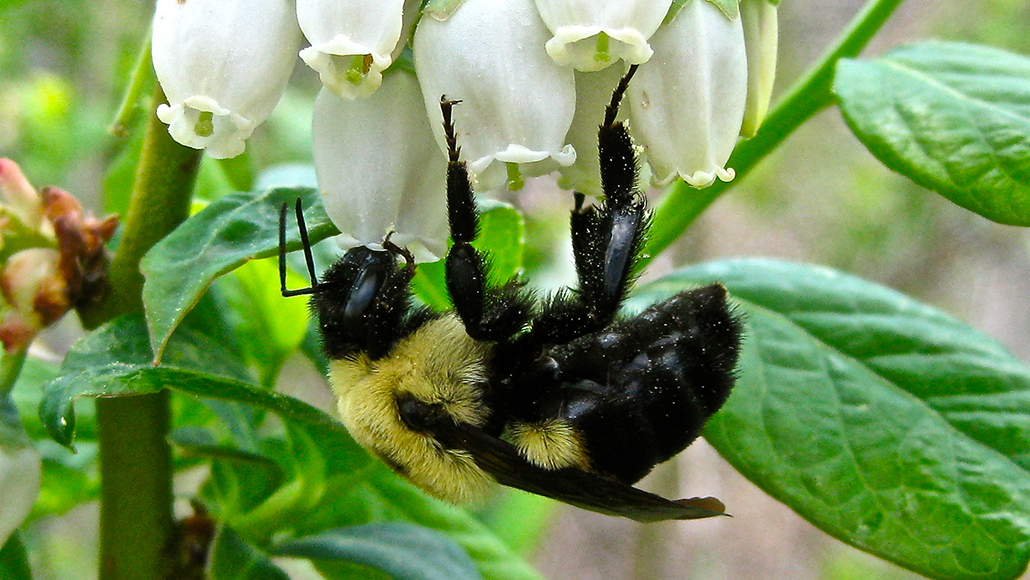Wild bees add about $1.5 billion to yields for just six U.S. crops
Threats to native pollinators could shrink profits even at farms stocking honeybees

Wild pollinators like this bumblebee visiting blueberry flowers turn out to boost yields even on some standard commercial farms that deploy honeybee hives for pollination.
© Faye Benjamin